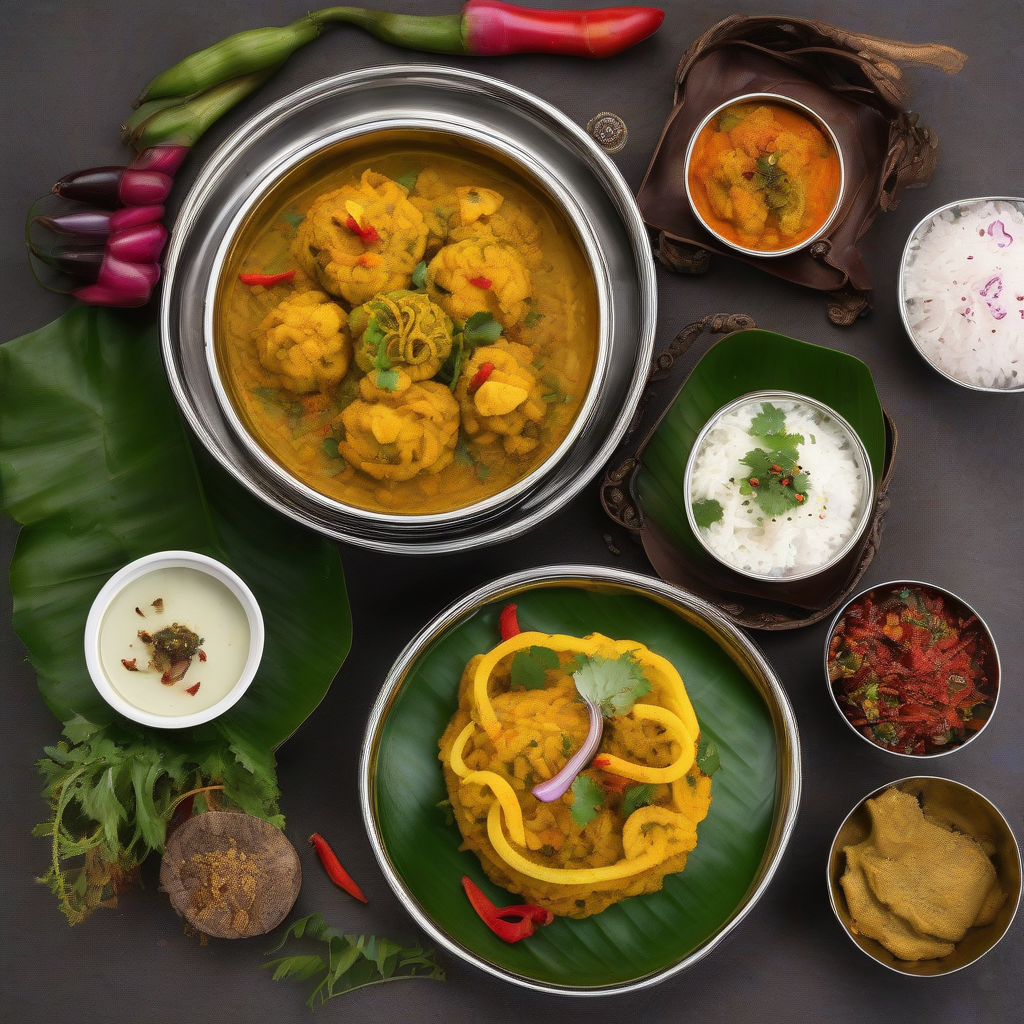Aye Mere Pyaare Readers! Phagshapa: A Taste of Sikkim in Your Kitchen!
Namaste and Tashi Delek, my foodie friends! Chef Curry Do’pyaza here, back with another dish that’s sure to tantalize your taste buds and transport you to the beautiful hills of Sikkim! Today, we’re diving into the delightful world of Phagshapa, a pork dish that’s as hearty as it is flavorful.
Think of it as a warm hug on a chilly day, a burst of savory goodness that will leave you wanting more. Phagshapa is more than just a dish; it’s a celebration of Sikkimese culture and a testament to the simple joys of home cooking.
A Festive Feast
Phagshapa isn’t just an everyday meal; it’s a dish that often graces tables during special occasions. You’ll find it shining brightly during Losar (Tibetan New Year), Saga Dawa (a Buddhist festival), and other festive gatherings. It’s a dish that brings families together, sharing stories and laughter over a steaming bowl of deliciousness. It’s especially popular during the colder months, providing warmth and comfort during the winter season.
A Glimpse into History
Phagshapa is a traditional Sikkimese dish, deeply rooted in the region’s culinary heritage. It’s a reflection of the local ingredients and cooking techniques passed down through generations. While the exact origins are shrouded in the mists of time, it’s believed to have evolved from simple, resourceful cooking methods that utilized readily available ingredients. It’s a dish that speaks of resilience, resourcefulness, and the enduring spirit of the Sikkimese people.
Let’s Get Cooking!
Preparation Time: 20 minutes
Cooking Time: 45 minutes
Ingredients:
- 500g Pork Belly, thinly sliced ( Sooar ka Maas)
- 1 cup Radish, thinly sliced (Mooli)
- 1 cup Dried Radish Leaves (Mooli ke Patte)
- 1 cup Turnip, thinly sliced (Shalgam)
- 1 cup Ginger, finely chopped (Adrak)
- 4-5 Green Chillies, slit (Hari Mirch)
- 2 tbsp Vegetable Oil (Tel)
- 1 tsp Turmeric Powder (Haldi)
- Salt to taste (Namak)
- Water as needed (Paani)
Instructions:
- Get the Pork Ready: In a large pot or wok, add the sliced pork belly. Add about 2 cups of water and bring to a boil. This helps render out some of the fat, making the dish lighter. Boil for about 10 minutes, then drain the water and set the pork aside.
- Sauté the Aromatics: Heat the vegetable oil in the same pot or wok over medium heat. Add the chopped ginger and green chilies. Sauté for a minute until fragrant. The aroma will fill your kitchen with an inviting scent!
- Add the Pork: Add the boiled pork belly to the pot and sauté for 5-7 minutes, until it starts to brown slightly. This step is crucial for developing the rich, savory flavor of the dish.
- Introduce the Veggies: Add the sliced radish, dried radish leaves, and turnip to the pot. Stir well to combine with the pork and spices.
- Season and Simmer: Add turmeric powder and salt to taste. Stir well and add enough water to just cover the ingredients. Bring to a boil, then reduce the heat to low, cover, and simmer for about 30-40 minutes, or until the vegetables are tender and the flavors have melded together beautifully. Keep an eye on the water level and add more if needed.
- Taste and Adjust: Once the vegetables are cooked, taste the Phagshapa and adjust the seasoning if necessary. Add more salt or green chillies to your liking.
- Serve Hot: Serve the Phagshapa hot with steamed rice. The combination of the savory pork and the slightly bitter vegetables is simply divine!
Chef Curry’s Top Tips:
- Pork Perfection: Using pork belly is key for the authentic Phagshapa flavor. The fat renders out during cooking, creating a rich and flavorful broth.
- Radish Revival: Don’t skip the dried radish leaves! They add a unique, slightly bitter flavor that is characteristic of Phagshapa. If you can’t find them, you can substitute with other leafy greens like spinach or mustard greens, but the flavor will be slightly different.
- Spice it Up: Feel free to adjust the amount of green chilies to your liking. If you prefer a milder dish, use fewer chilies or remove the seeds.
- Patience is Key: Simmering the Phagshapa for a longer time allows the flavors to meld together beautifully. Don’t rush the process!
Cooking it Your Way:
- Gas Stove: The traditional method, perfect for slow simmering and developing rich flavors.
- Induction Stove: Works just as well as a gas stove, offering precise temperature control.
- Pressure Cooker: For a quicker version, pressure cook the pork and vegetables for 15-20 minutes after adding water.
- Slow Cooker/Crockpot: Combine all ingredients in the slow cooker and cook on low for 6-8 hours for a melt-in-your-mouth experience.
- Oven: Not recommended for this particular dish.
- Microwave: Not recommended for this particular dish.
- Air Fryer: Not recommended for this particular dish.
Nutritional Information (Approximate, per serving):
- Calories: 450-500
- Protein: 30-35g
- Fat: 30-35g
- Carbohydrates: 10-15g
(Note: These values are approximate and can vary based on ingredient amounts and cooking methods.)
Serving Suggestions:
- Serve hot with steamed rice.
- Garnish with fresh coriander leaves for a pop of color and freshness.
- A side of spicy chili sauce or pickle complements the dish beautifully.
A Taste of Sikkim Awaits!
There you have it, my friends! A simple yet flavorful recipe for Phagshapa that you can easily recreate in your own kitchen. It’s a dish that’s sure to impress your friends and family and transport them to the beautiful hills of Sikkim.
So, what are you waiting for? Gather your ingredients, put on your apron, and get ready to embark on a culinary adventure! Try this recipe at home, share it with your loved ones, and let the flavors of Sikkim fill your hearts and homes.
Happy Cooking, and remember, pet pooja is the best pooja!
Until next time,
Chef Curry Do’pyaza.
